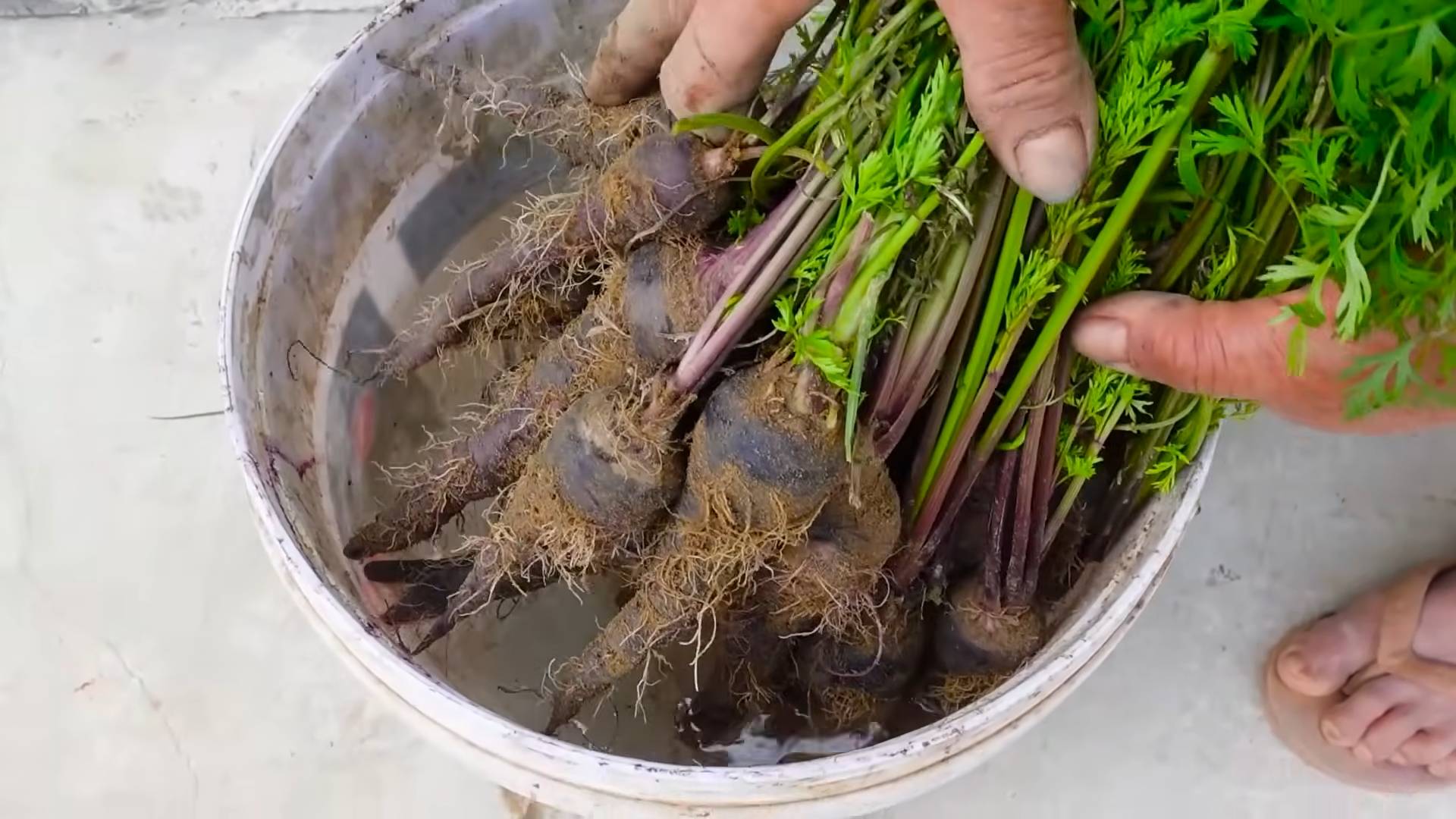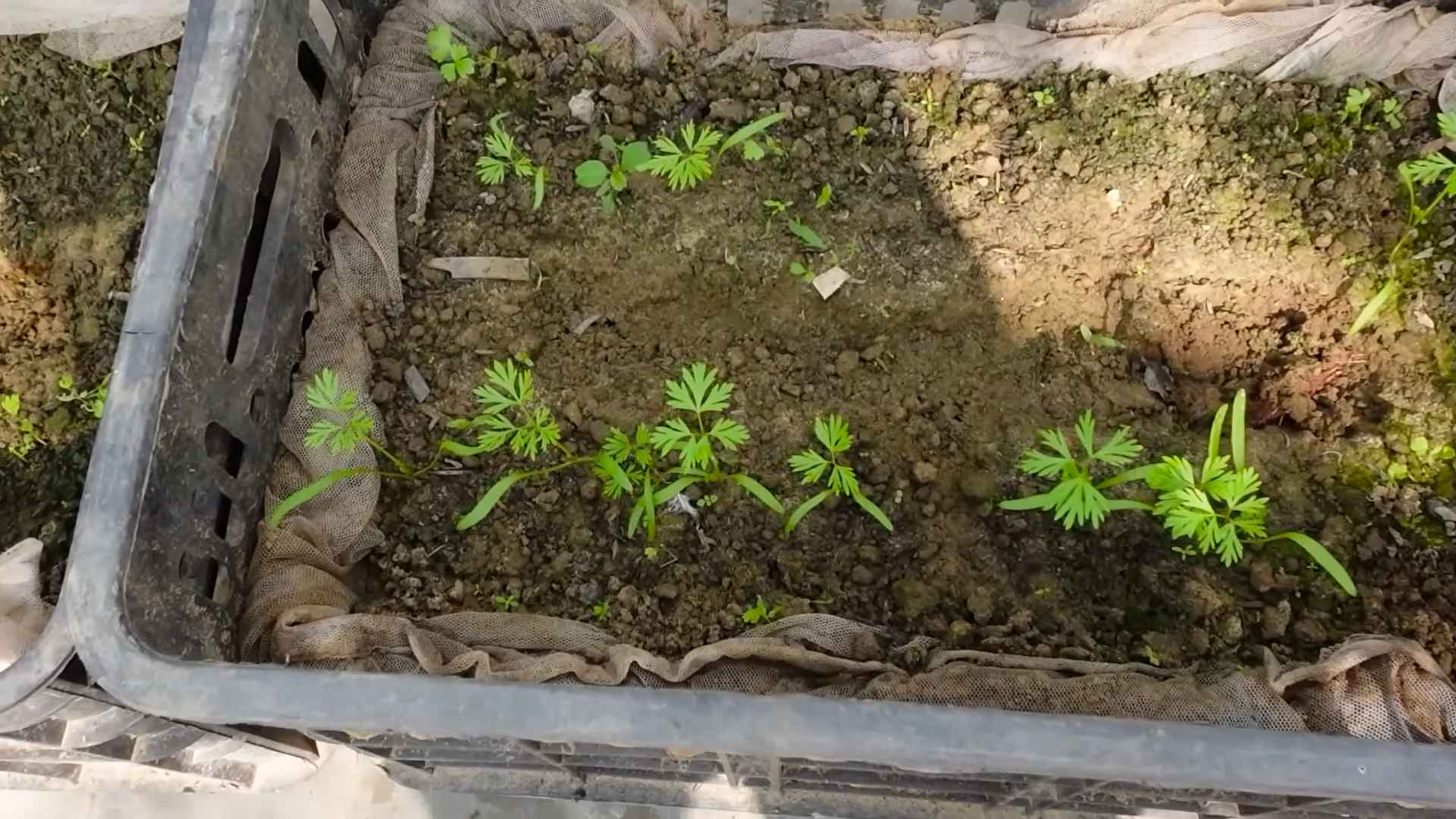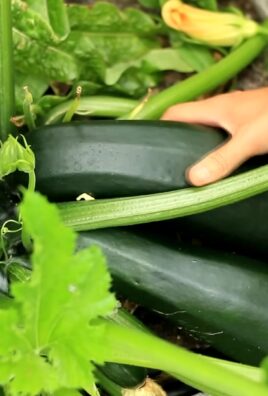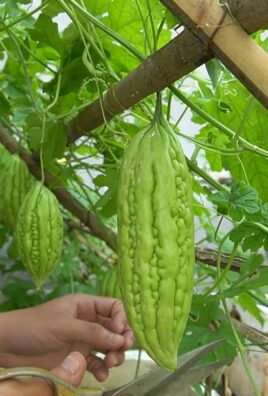Carrot Growing Home Garden Hacks: Ever dream of pulling vibrant, sweet carrots straight from your own backyard? I know I have! There’s something incredibly satisfying about nurturing a tiny seed into a delicious, homegrown treat. But let’s be honest, carrot growing can sometimes feel like a gamble. You meticulously prepare the soil, sow the seeds with care, and then… nothing. Or worse, you end up with stunted, forked, and frankly, disappointing carrots.
For centuries, gardeners have been trying to unlock the secrets to successful carrot cultivation. From ancient Persia, where carrots were originally purple and white, to modern-day kitchen gardens, the quest for the perfect carrot harvest continues. The good news is, you don’t need to be an expert to achieve carrot-growing success.
That’s why I’ve compiled this collection of tried-and-true carrot growing home garden hacks and DIY tricks to help you overcome common challenges and maximize your yield. Whether you’re battling rocky soil, pesky pests, or simply struggling to get those seeds to germinate, I’ve got you covered. These simple, yet effective techniques will empower you to grow the juiciest, most flavorful carrots you’ve ever tasted. Get ready to transform your garden and impress your friends with your carrot-growing prowess!

Grow the Best Carrots Ever: My Foolproof DIY Hacks!
Hey there, fellow garden enthusiasts! I’m so excited to share my tried-and-true methods for growing the most delicious, vibrant carrots right in your own backyard. Forget those bland, store-bought carrots – we’re talking about sweet, crunchy goodness straight from the earth. I’ve learned a lot over the years, and I’m ready to spill all my secrets. Let’s get digging!
Choosing the Right Carrot Variety
Before we even think about planting, let’s talk about carrot varieties. Not all carrots are created equal! Choosing the right one for your climate and soil is crucial.
* Nantes: These are my go-to! They’re cylindrical, sweet, and mature relatively quickly. They also tolerate heavier soils better than some other varieties.
* Danvers: These are classic, tapered carrots. They’re known for their good flavor and storage capabilities.
* Chantenay: These are shorter, thicker carrots, perfect for shallow or rocky soils. They’re also great for juicing.
* Imperator: These are the long, slender carrots you often see in the grocery store. They require deep, loose soil to thrive.
* Round/Parisian: These are adorable little round carrots that are perfect for containers or small gardens.
Consider your soil type, growing season length, and personal preferences when making your choice. I always recommend trying a few different varieties to see what works best for you!
Preparing the Soil: The Key to Carrot Success
Carrots are notoriously picky about their soil. They need loose, well-drained soil to grow long and straight. Rocky or compacted soil will result in stunted, forked, or otherwise misshapen carrots. Trust me, I’ve been there!
* Soil Testing: Before you do anything, get your soil tested! This will tell you the pH level and nutrient content. Carrots prefer a slightly acidic soil (pH 6.0-6.8).
* Loosening the Soil: This is the most important step! Carrots need loose soil to grow properly.
* Double Digging (My Preferred Method): This involves digging down two spade depths and amending the soil with compost and other organic matter. It’s a bit of work, but it’s worth it!
* Tilling: If you have a large area, you can use a tiller to loosen the soil. Be careful not to over-till, as this can damage the soil structure.
* Raised Beds: Raised beds are a great option if you have poor soil. You can fill them with a custom soil mix that’s perfect for carrots.
* Amending the Soil: Add plenty of compost to improve drainage and fertility. I also like to add some sand or perlite to further improve drainage, especially if I have clay soil. Avoid adding too much nitrogen, as this can lead to excessive foliage growth at the expense of root development. Bone meal is a good source of phosphorus, which promotes root growth.
* Removing Rocks and Debris: This is crucial! Even small rocks can cause carrots to fork or split. Sift through the soil carefully and remove any rocks, sticks, or other debris.
* Creating a Fine Seedbed: Rake the soil smooth and break up any large clumps. You want a fine, even seedbed for optimal germination.
Sowing the Seeds: Getting Started Right
Carrot seeds are tiny and can be tricky to sow evenly. Here’s my method for getting the best results:
* Timing: Carrots are a cool-season crop, so plant them in early spring or late summer for a fall harvest. Check your local frost dates to determine the best planting time. I usually aim for 2-3 weeks before the last expected frost in spring, and 8-10 weeks before the first expected frost in fall.
* Spacing: Sow seeds about 1/4 to 1/2 inch deep and 1-2 inches apart in rows that are 12-18 inches apart.
* Sowing Technique:
* Seed Tape: This is my favorite method! Seed tape consists of seeds embedded in biodegradable paper. It makes it easy to sow seeds evenly and at the correct spacing.
* Seed Dispenser: A seed dispenser is a small tool that helps you sow seeds one at a time. It’s a good option if you don’t want to use seed tape.
* Hand Sowing: If you’re sowing by hand, mix the carrot seeds with sand or coffee grounds to help you spread them more evenly.
* Watering: Water the soil gently after sowing. Keep the soil consistently moist until the seeds germinate.
* Marking Rows: Use row markers to identify your carrot rows. This will help you avoid accidentally weeding them out later.
Thinning: Giving Carrots Room to Grow
Thinning is essential for growing large, healthy carrots. If the seedlings are too crowded, they’ll compete for resources and won’t develop properly.
* Timing: Thin the seedlings when they are about 1-2 inches tall.
* Technique: Gently pull out the weaker seedlings, leaving the strongest ones spaced about 2-3 inches apart. Be careful not to disturb the roots of the remaining seedlings. I find it helpful to use small scissors to snip the unwanted seedlings at the soil line, rather than pulling them out. This minimizes disturbance to the roots of the carrots you want to keep.
* Successive Thinning: You may need to thin the carrots again a few weeks later, as they continue to grow. Aim for a final spacing of about 3-4 inches between plants.
Watering and Fertilizing: Keeping Carrots Happy
Carrots need consistent moisture and nutrients to thrive.
* Watering: Water deeply and regularly, especially during dry periods. Avoid overhead watering, as this can promote fungal diseases. Soaker hoses or drip irrigation are ideal.
* Fertilizing: Carrots don’t need a lot of fertilizer, but a side dressing of compost or a balanced organic fertilizer a few weeks after thinning can be beneficial. Avoid using fertilizers that are high in nitrogen, as this can lead to excessive foliage growth.
* Mulching: Apply a layer of mulch around the plants to help retain moisture, suppress weeds, and regulate soil temperature. Straw, hay, or shredded leaves are good options.
Weed Control: Protecting Your Precious Carrots
Weeds can compete with carrots for resources and harbor pests and diseases.
* Hand Weeding: The best way to control weeds in your carrot patch is to hand weed regularly. Be careful not to disturb the carrot roots.
* Mulching: Mulch will help suppress weed growth.
* Pre-Emergent Herbicides: If you’re having trouble controlling weeds, you can use a pre-emergent herbicide before planting. Be sure to follow the instructions carefully. I personally prefer to avoid herbicides whenever possible and rely on hand weeding and mulching.
Pest and Disease Control: Keeping Carrots Healthy
Carrots are relatively pest-resistant, but they can be susceptible to certain problems.
* Carrot Rust Fly: This is a common pest that can damage carrot roots. Cover your carrot patch with row covers to prevent the flies from laying their eggs.
* Leafhoppers: These insects can transmit diseases to carrots. Control them with insecticidal soap or neem oil.
* Aster Yellows: This disease can cause carrots to become hairy and bitter. Control leafhoppers to prevent the spread of the disease.
* Fungal Diseases: Fungal diseases can be a problem in humid conditions. Improve air circulation by spacing plants properly and avoiding overhead watering.
Harvesting: Enjoying the Fruits (or Roots!) of Your Labor
The moment we’ve all been waiting for!
* Timing: Carrots are typically ready to harvest 60-80 days after planting, depending on the variety. Check the seed packet for specific maturity dates.
* Signs of Maturity: The tops of the carrots will be visible above the soil. You can also gently dig around the base of a plant to check the size of the root.
* Harvesting Technique: Loosen the soil around the carrots with a garden fork or trowel. Gently pull the carrots out of the ground by their tops. If the soil is dry, water it before harvesting to make it easier to pull the carrots.
* Storage: Remove the tops and store the carrots in a cool, dark, and humid place. A root cellar is ideal, but you can also store them in the refrigerator in a plastic bag or container.
My Secret Weapon: Companion Planting
Companion planting is the practice of planting different crops together to benefit each other. Here are some of my favorite companion plants for carrots:
* Onions and Garlic: These plants repel carrot rust flies.
* Marigolds: These flowers repel nematodes and other

Conclusion
So, there you have it! These simple yet effective carrot growing home garden hacks are your ticket to a bountiful harvest of sweet, crunchy carrots, right from your own backyard. Forget those bland, store-bought carrots – imagine the satisfaction of pulling up vibrant, flavorful carrots that you nurtured from seed to table.
Why is this a must-try? Because it’s more than just growing carrots; it’s about connecting with nature, understanding the growing process, and enjoying the unparalleled taste of homegrown produce. It’s about reducing your reliance on grocery stores, minimizing your carbon footprint, and knowing exactly what goes into your food. Plus, let’s be honest, there’s a certain magic to watching a tiny seed transform into a delicious root vegetable.
But the best part? These hacks are adaptable to your specific needs and preferences. Experiment with different carrot varieties – Nantes for their classic sweetness, Chantenay for their sturdiness in heavy soils, or even colorful varieties like purple or yellow carrots for a visual treat. Try companion planting with onions or garlic to deter pests naturally. Consider succession planting, sowing seeds every few weeks, to ensure a continuous harvest throughout the growing season. You can even adapt these techniques for container gardening if you’re short on space.
Don’t be afraid to get your hands dirty and personalize these carrot growing home garden hacks. The beauty of gardening lies in the experimentation and the learning process. Every garden is unique, and every gardener has their own style.
We wholeheartedly encourage you to give these tips a try. Start small, be patient, and don’t be discouraged by initial setbacks. Gardening is a journey, not a destination. And the rewards – fresh, delicious carrots and the joy of nurturing life – are well worth the effort.
Once you’ve experienced the magic of homegrown carrots, we’d love to hear about it! Share your successes, your challenges, and any variations you’ve tried in the comments below. Let’s create a community of carrot-growing enthusiasts, sharing knowledge and inspiring each other to cultivate thriving gardens. Your experiences could be invaluable to other aspiring gardeners. So, grab your seeds, prepare your soil, and get ready to embark on a rewarding carrot-growing adventure! Happy gardening!
Frequently Asked Questions (FAQ)
Q: What is the best time of year to plant carrots?
A: Carrots are a cool-season crop, meaning they thrive in cooler temperatures. The best time to plant carrots is typically in early spring, about 2-3 weeks before the last expected frost. You can also plant them in late summer or early fall for a fall harvest. In warmer climates, you can even plant carrots throughout the winter. The key is to avoid planting during the hottest months of the year, as high temperatures can cause the roots to become bitter and stunted. Check your local frost dates to determine the optimal planting time for your region.
Q: What kind of soil is best for growing carrots?
A: Carrots need loose, well-drained soil to grow properly. Rocky or compacted soil can cause the roots to become misshapen or stunted. Ideally, the soil should be sandy loam, which is a mixture of sand, silt, and clay. Before planting, amend the soil with compost or other organic matter to improve drainage and fertility. Avoid using fresh manure, as it can cause the roots to fork. A pH level between 6.0 and 6.8 is ideal for carrot growth.
Q: How deep should I plant carrot seeds?
A: Carrot seeds are very small, so they should be planted shallowly. Sow the seeds about ¼ to ½ inch deep and space them about 1-2 inches apart. Gently cover the seeds with soil and water thoroughly. Keep the soil consistently moist until the seeds germinate, which usually takes about 1-3 weeks.
Q: How often should I water my carrot plants?
A: Carrots need consistent moisture to grow properly. Water deeply and regularly, especially during dry periods. Aim to keep the soil consistently moist but not waterlogged. Overwatering can lead to root rot, while underwatering can cause the roots to become tough and bitter. A good rule of thumb is to water when the top inch of soil feels dry to the touch.
Q: How much sunlight do carrots need?
A: Carrots need at least 6 hours of sunlight per day to thrive. Choose a sunny location in your garden for planting. If you live in a hot climate, some afternoon shade can be beneficial to prevent the roots from overheating.
Q: How do I thin carrot seedlings?
A: Thinning is essential for giving carrots enough space to grow. Once the seedlings are a few inches tall, thin them to about 2-3 inches apart. Gently pull out the weaker seedlings, being careful not to disturb the roots of the remaining plants. You can eat the thinned seedlings as microgreens.
Q: What are some common carrot pests and diseases?
A: Common carrot pests include carrot rust flies, aphids, and nematodes. Diseases include leaf blight and root rot. To prevent pests and diseases, practice good garden hygiene, such as removing weeds and debris. You can also use organic pest control methods, such as insecticidal soap or neem oil. Ensure proper soil drainage to prevent root rot. Companion planting with onions or garlic can also help deter pests.
Q: How do I know when my carrots are ready to harvest?
A: Carrots are typically ready to harvest 60-80 days after planting, depending on the variety. The size of the carrot will also indicate its maturity. Check the seed packet for the expected size of the mature carrots. To harvest, gently loosen the soil around the carrot and pull it straight up. If the soil is dry, water it beforehand to make harvesting easier.
Q: Can I grow carrots in containers?
A: Yes, you can grow carrots in containers, but you’ll need to choose a container that is deep enough to accommodate the roots. A container that is at least 12 inches deep is ideal. Use a well-draining potting mix and follow the same planting and care instructions as for growing carrots in the ground. Container-grown carrots may need more frequent watering than those grown in the ground.
Q: What are some good companion plants for carrots?
A: Good companion plants for carrots include onions, garlic, rosemary, sage, and marigolds. These plants can help deter pests and improve the flavor of the carrots. Avoid planting carrots near dill or fennel, as these plants can attract pests that also attack carrots.
Q: How do I store harvested carrots?
A: To store harvested carrots, remove the greens and brush off any excess soil. Store the carrots in a cool, dark, and humid place, such as the refrigerator. You can wrap them in a damp paper towel or store them in a plastic bag with a few holes for ventilation. Carrots can typically be stored for several weeks in the refrigerator. You can also freeze carrots after blanching them.
Q: Can I save carrot seeds for next year?
A: Saving carrot seeds is a bit more involved than saving seeds from some other vegetables. Carrots are biennials, meaning they take two years to produce seeds. In the first year, they grow roots and foliage. In the second year, they flower and produce seeds. To save carrot seeds, you’ll need to leave some carrots in the ground over the winter. In the spring, they will start to grow again and eventually produce flowers and seeds. Allow the seeds to dry on the plant before harvesting them.




Leave a Comment